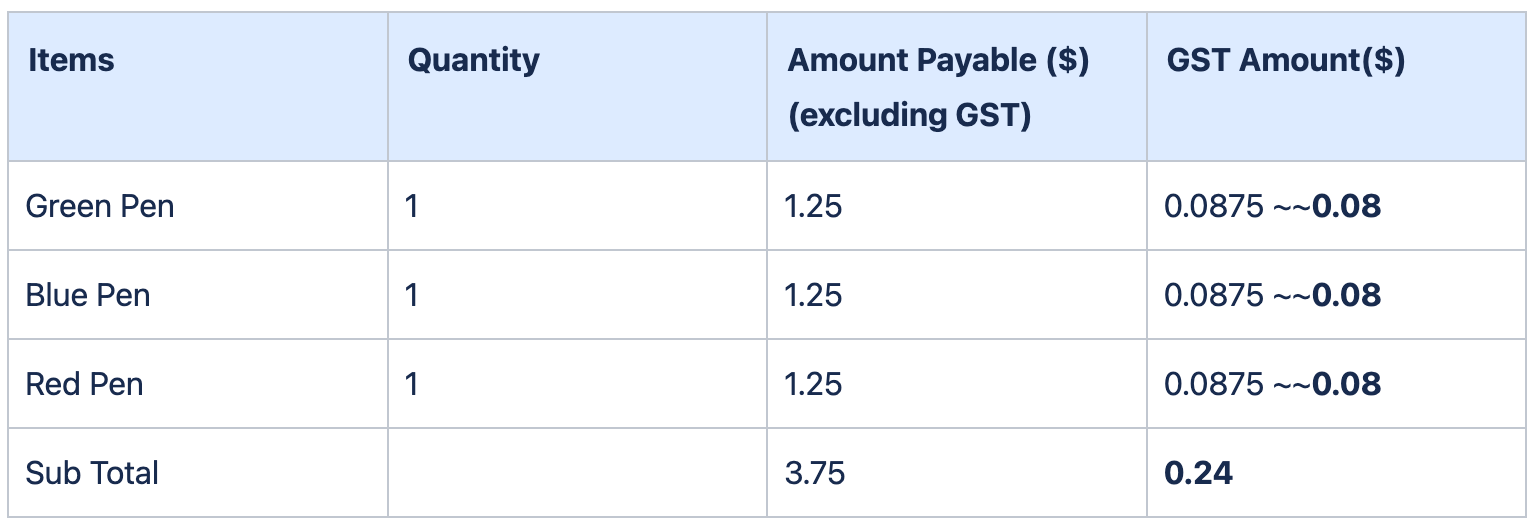Why is the bill rounded to the nearest 5 cents?
Based on IRAS e-Tax Guide Section 7.5.1 :
The total GST payable on all goods and services shown on a tax invoice may be rounded off to the nearest whole cent (i.e. two decimal places). With the discontinuation of 1 cent coins, some businesses may round their bills (i.e. total amount payable including GST) to the nearest 5 cents to facilitate cash payment by their customers. Whether a bill should be rounded up or rounded down to the nearest 5 cents is a business decision. However, this must be applied consistently.
How is GST amount calculated in EPOS?
Based on IRAS e-Tax Guide Section 7.5.2 :
There are two ways to compute the total GST amount if your tax invoice contains several line items of standard-rated supplies.
METHOD 1
Calculate the GST amount for each line item and sum up the GST amounts for each line item
METHOD 2
Calculate the GST on the total amount payable (i.e. summing all line items before GST).
Note: The total GST amount computed may differ due to the method used. Both methods of computing the total GST amount are acceptable so long as you apply the chosen method consistently.
EPOS uses METHOD 1
-
Calculate the GST for each line item
-
Truncate the value to 2 decimal place for the tax amount calculated from each line item.
-
Sum up all values = Total GST for the bill.

Note that this is fully in accordance to the guidance provided by IRAS. This method is mathematically superior, because it always results in lower GST paid compared to taking 7% on the whole bill.
